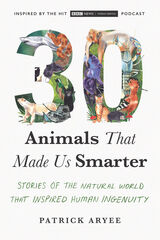
Take the woodpecker as one incredible example. Woodpeckers can face up to 1,2000 Gs of force, but they’re protected from brain damage by the design of their beaks and skulls. These marvels of nature have inspired an array of cutting-edge ideas, from an advanced black box recorder for airplanes to an exceptionally strong bike helmet. In 30 Animals That Made Us Smarter, join wildlife biologist, TV host, and BBC podcaster Patrick Aryee as he tells stories of biomimicry, or innovations inspired by the natural world, which enrich our lives every day—and in some cases, save them.
With Aryee’s infectious curiosity and sense of wonder as inspiration, venture with us into the hidden world of biomimicry. 30 Animals That Made Us Smarter will reveal animals’ exceptional powers and change the way you look at the natural world forever.
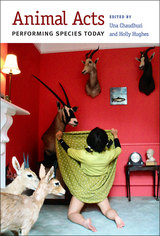
We all have an animal story—the pet we loved, the wild animal that captured our childhood imagination, the deer the neighbor hit while driving. While scientific breakthroughs in animal cognition, the effects of global climate change and dwindling animal habitats, and the exploding interdisciplinary field of animal studies have complicated things, such stories remain a part of how we tell the story of being human. Animal Acts collects eleven exciting, provocative, and moving stories by solo performers, accompanied by commentary that places the works in a broader context.
Work by leading theater artists Holly Hughes, Rachel Rosenthal, Deke Weaver, Carmelita Tropicana, and others joins commentary by major scholars including Donna Haraway, Jane Desmond, Jill Dolan, and Nigel Rothfels. Una Chaudhuri’s introduction provides a vital foundation for understanding and appreciating the intersection of animal studies and performance. The anthology foregrounds questions of race, gender, sexuality, class, nation, and other issues central to the human project within the discourse of the “post human,” and will appeal to readers interested in solo performance, animal studies, gender studies, performance studies, and environmental studies.
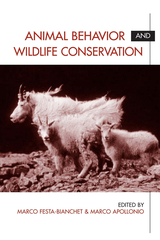
Efforts to conserve wildlife populations and preserve biological diversity are often hampered by an inadequate understanding of animal behavior. How do animals react to gaps in forested lands, or to sport hunters? Do individual differences—in age, sex, size, past experience—affect how an animal reacts to a given situation? Differences in individual behavior may determine the success or failure of a conservation initiative, yet they are rarely considered when strategies and policies are developed.
Animal Behavior and Wildlife Conservation explores how knowledge of animal behavior may help increase the effectiveness of conservation programs. The book brings together conservation biologists, wildlife managers, and academics from around the world to examine the importance of general principles, the role played by specific characteristics of different species, and the importance of considering the behavior of individuals and the strategies they adopt to maximize fitness.
Each chapter begins by looking at the theoretical foundations of a topic, and follows with an exploration of its practical implications. A concluding chapter considers possible future contributions of research in animal behavior to wildlife conservation.

Together with Konrad Lorenz, Niko Tinbergen is generally acknowledged as the founder of the young science of ethology. Professor Tinbergen has spent a lifetime of research exploring the behavior of many types of animals in their natural environments, and has founded centers of worldwide renown for research and teaching in the behavioral sciences, first in his native Holland and later at Oxford. His influence extends far beyond the borders of Europe and of zoology proper, and he has contributed substantially to international and interdisciplinary collaboration.
Tinbergen’s work has been characterized by many as a “breath of fresh air” in fields that were in danger of losing touch with nature and of becoming bogged down in theory. He has tirelessly worked for the use of scientific methods in the study of human behavior, both normal and abnormal. Without shying away from quantification and measurement, he has made his main contribution in what Sir Peter Medawar calls “creative observation” and in the design of meaningful experiments, even in the seemingly chaotic and continuously varying conditions of the natural habitat.
In following him in what Tinbergen likes to call his seemingly aimless wanderings, the reader will catch a unique glimpse into the workshop of ethology. Even when reporting on sophisticated experiments, or when developing new theoretical concepts and arguments, Tinbergen writes simply, lucidly, and precisely. The present volume spans forty years of pioneer investigation and includes selections on the behavior of gulls; on the homing, landmark preference, and prey findings of the digger wasp; on the food hoarding of foxes; and on creatures living scattered as a defense against predators.
These classic original studies will fascinate the increasing number of readers interested in the topical problems of animals and human behavior.

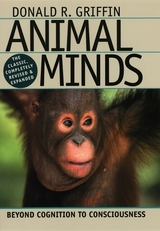
With this new edition of his classic book, which he has completely revised and updated, Griffin moves beyond considerations of animal cognition to argue that scientists can and should investigate questions of animal consciousness. Using examples from studies of species ranging from chimpanzees and dolphins to birds and honeybees, he demonstrates how communication among animals can serve as a "window" into what animals think and feel, just as human speech and nonverbal communication tell us most of what we know about the thoughts and feelings of other people. Even when they don't communicate about it, animals respond with sometimes surprising versatility to new situations for which neither their genes nor their previous experiences have prepared them, and Griffin discusses what these behaviors can tell us about animal minds. He also reviews the latest research in cognitive neuroscience, which has revealed startling similarities in the neural mechanisms underlying brain functioning in both humans and other animals. Finally, in four chapters greatly expanded for this edition, Griffin considers the latest scientific research on animal consciousness, pro and con, and explores its profound philosophical and ethical implications.
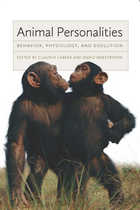

This readable text represents a much needed synthesis of ecological insight into animal behavior. The field of behavioral ecology is relatively new, having evolved from a combination of classical ethology, as developed by Lorenz and Tinbergen, and population ecology. Now for the first time, a single author integrates the vast literature on animal ecology and behavior into a conceptual whole.
Exploring the theme of resource acquisitions, Douglass H. Morse combines the comparative approach to biology with models based on evolutionary theory. Secondary consequences of sexual selection and other selective pressures are considered in detail. Discussion of interspecific interactions and constraints is especially rich, as is the treatment of foraging theory, kinship theory, habitat selection and predator avoidance. Perhaps the book’s greatest achievement, however, is its unparalleled ecological and evolutionary analysis of individual differences.
Behavioral Mechanisms in Ecology will meet the teaching and reference needs of an extremely broad audience of professional biologists.
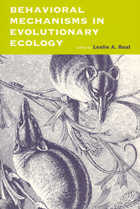
With studies of species ranging from insects to primates, the contributors examine how various animals identify and use environmental resources and deal with ecological constraints, as well as the roles of learning, communication, and cognitive aspects of social interaction in behavioral evolution. Taken together, the chapters demonstrate how the study of internal mechanistic foundations of behavior in relation to their ecological and evolutionary contexts and outcomes provides valuable insight into such behaviors as predation, mating, and dispersal.
Behavioral Mechanisms in Evolutionary Ecology shows how a mechanistic approach unites various levels of biological organization to provide a broader understanding of the biological bases of behavioral evolution.
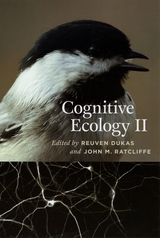
Merging evolutionary ecology and cognitive science, cognitive ecology investigates how animal interactions with natural habitats shape cognitive systems, and how constraints on nervous systems limit or bias animal behavior. Research in cognitive ecology has expanded rapidly in the past decade, and this second volume builds on the foundations laid out in the first, published in 1998.
Cognitive Ecology II integrates numerous scientific disciplines to analyze the ecology and evolution of animal cognition. The contributors cover the mechanisms, ecology, and evolution of learning and memory, including detailed analyses of bee neurobiology, bird song, and spatial learning. They also explore decision making, with mechanistic analyses of reproductive behavior in voles, escape hatching by frog embryos, and predation in the auditory domain of bats and eared insects. Finally, they consider social cognition, focusing on alarm calls and the factors determining social learning strategies of corvids, fish, and mammals.
With cognitive ecology ascending to its rightful place in behavioral and evolutionary research, this volume captures the promise that has been realized in the past decade and looks forward to new research prospects.
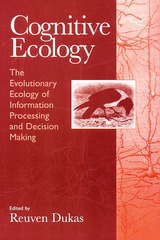
Individual chapters consider such issues as the evolution of learning and its influence on behavior; the effects of cognitive mechanisms on the evolution of signaling behavior; how neurobiological and evolutionary processes have shaped navigational activities; functional and mechanical explanations for altered behaviors in response to changing environments; how foragers make decisions and how these decisions are influenced by the risks of predation; and how cognitive mechanisms affect partner choice.
Cognitive Ecology will encourage biologists to consider how animal cognition affects behavior, and will also interest comparative psychologists and cognitive scientists.

What do such words as “information,” “displacement,” and “courtship” mean to the growing ranks of ethologists who study animal behavior? Like all sciences, ethology has accumulated its own set of concepts and terms, taken from everyday language, borrowed from neighboring disciplines, or coined especially to describe novel ideas and phenomena. Klaus Immelmann and Colin Beer have responded to the acute need for an authoritative dictionary of ethology with this valuable guide to the world of animal behavior.
The authors present a balance of historical, enduring, and current terminology, providing clear and concise definitions of the terms central to ethological writing. They give special treatment to terms from related disciplines, particularly evolutionary biology, physiology, ecology, and sociobiology, and to controversial concepts such as “instinct,” “motivation,” and “imprinting.” For words like these, the authors take pains to explain the nature of the problem, to distinguish differences of meaning, and to chart the range of application. A preponderance of terms relate to the behavior of higher vertebrates, especially mammals and birds, since these animals supply a high proportion of ethology’s basic ideas and technical concepts.
Representing the culmination of two decades of assiduous scholarship, this book will be immensely useful to neophyte and professional alike.

In social relationships—whether between mates, parents and offspring, or friends—we find much of life’s meaning. But in these relationships, so critical to our well-being, might we also detect the workings, even directives, of biology? This book, a rare melding of human and animal research and theoretical and empirical science, ventures into the most interesting realms of behavioral biology to examine the intimate role of endocrinology in social relationships.
The importance of hormones to reproductive behavior—from breeding cycles to male sexual display—is well known. What this book considers is the increasing evidence that hormones are just as important to social behavior. Peter Ellison and Peter Gray include the latest findings—both practical and theoretical—on the hormonal component of both casual interactions and fundamental bonds. The contributors, senior scholars and rising scientists whose work is shaping the field, go beyond the proximate mechanics of neuroendocrine physiology to integrate behavioral endocrinology with areas such as reproductive ecology and life history theory. Ranging broadly across taxa, from birds and rodents to primates, the volume pays particular attention to human endocrinology and social relationships, a focus largely missing from most works of behavioral endocrinology.
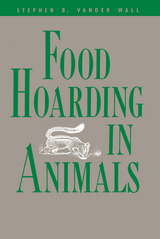
Drawings, photographs, and appendixes document complex and intrinsically interesting food-hoarding behaviors, and the bibliography of nearly 1,500 sources is itself an invaluable and unique reference.

A key document in the genealogy of posthumanist thought, A Foray into the Worlds of Animals and Humans advances Uexküll's revolutionary belief that nonhuman perceptions must be accounted for in any biology worth its name; it also contains his arguments against natural selection as an adequate explanation for the present orientation of a species' morphology and behavior. A Theory of Meaning extends his thinking on the umwelt, while also identifying an overarching and perceptible unity in nature. Those coming to Uexküll's work for the first time will find that his concept of the umwelt holds out new possibilities for the terms of animality, life, and the whole framework of biopolitics itself.

The papers are divided into six sections, each introduced by prominent researchers. Sections one and two cover the origins and history of the field and the emergence of basic methods and approaches. They provide a background for sections three through six, which focus on development and learning; neural and hormonal mechanisms of behavior; sensory processes, orientation, and communication; and the evolution of behavior.
This outstanding collection will serve as the basis for undergraduate and graduate seminars and as a reference for researchers in animal behavior, whether they focus on ethology, behavioral ecology, comparative psychology, or anthropology.
Published in association with the Animal Behavior Society
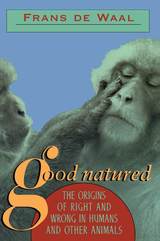
To observe a dog's guilty look.
to witness a gorilla's self-sacrifice for a wounded mate, to watch an elephant herd's communal effort on behalf of a stranded calf--to catch animals in certain acts is to wonder what moves them. Might there he a code of ethics in the animal kingdom? Must an animal be human to he humane? In this provocative book, a renowned scientist takes on those who have declared ethics uniquely human Making a compelling case for a morality grounded in biology, he shows how ethical behavior is as much a matter of evolution as any other trait, in humans and animals alike.
World famous for his brilliant descriptions of Machiavellian power plays among chimpanzees-the nastier side of animal life--Frans de Waal here contends that animals have a nice side as well. Making his case through vivid anecdotes drawn from his work with apes and monkeys and holstered by the intriguing, voluminous data from his and others' ongoing research, de Waal shows us that many of the building blocks of morality are natural: they can he observed in other animals. Through his eyes, we see how not just primates but all kinds of animals, from marine mammals to dogs, respond to social rules, help each other, share food, resolve conflict to mutual satisfaction, even develop a crude sense of justice and fairness.
Natural selection may be harsh, but it has produced highly successful species that survive through cooperation and mutual assistance. De Waal identifies this paradox as the key to an evolutionary account of morality, and demonstrates that human morality could never have developed without the foundation of fellow feeling our species shares with other animals. As his work makes clear, a morality grounded in biology leads to an entirely different conception of what it means to he human--and humane.
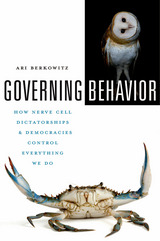
From simple reflexes to complex choreographies of movement, all animal behavior is governed by a nervous system. But what kind of government is it—a dictatorship or a democracy?
Nervous systems consist of circuits of interconnected nerve cells (neurons) that transmit and receive information via electrical signals. Every moment, each neuron adds up stimulating and inhibiting inputs from many other neurons to determine whether to send an electrical signal to its recipients. Some circuits are dominated by a single “dictator” neuron that gathers information from many sources and then issues commands, such as the Mauthner neuron that triggers escape in fish. In other more “democratic” circuits, such as those mediating eye movements in monkeys, the outcome is determined by a tally of “votes” from a large population of neurons. Rhythmic movements like breathing and locomotion are generated by “government programs” within the central nervous system, but modified by a soup of chemicals and by free market–like feedback from sensory neurons. Nervous systems also use sophisticated surveillance of the surrounding environment and keep track of their own decisions in order to avoid internal conflicts. Nervous systems are not restricted to using one set of procedures at a time. They have evolved over long periods to control behaviors in whichever ways are most effective, and they essentially combine multiple forms of government simultaneously.
Engaging and accessible, Governing Behavior explains the variety of structures and strategies that control behavior, while providing an overview of thought-provoking debates and cutting-edge research in neurobiology.
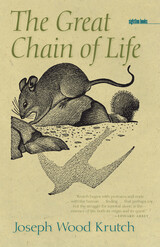
Whether anticipating the arguments of biologists who now ascribe high levels of cognition to the so-called lower animals, recognizing the importance of nature for a well-lived life, or seeing nature as an elaborately interconnected, interdependent network, Krutch’s seminal work contains lessons just as resonant today as they were when the book was first written.
Lavishly illustrated with thirteen beautiful woodcuts by Paul Landacre, an all-but-lost yet important Los Angeles artist whom Rockwell Kent called “the best American wood engraver working,” The Great Chain of Life will be cherished by new generations of readers.
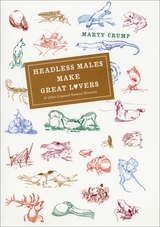
Headless Males Make Great Lovers and Other Unusual Natural Histories celebrates the extraordinary world of animals with essays on curious creatures and their amazing behaviors. In five thematic chapters, Marty Crump—a tropical field biologist well known for her work with the reproductive behavior of amphibians—examines the bizarre conduct of animals as they mate, parent, feed, defend themselves, and communicate. Crump's enthusiasm for the unusual behaviors she describes-from sex change and free love in sponges to aphrodisiac concoctions in bats-is visible on every page, thanks to her skilled storytelling, which makes even sea slugs, dung beetles, ticks, and tapeworms fascinating and appealing. Steeped in biology, Headless Males Make Great Lovers points out that diverse and unrelated animals often share seemingly bizarre behaviors—evidence, Crump argues, that these natural histories, though outwardly weird, are successful ways of living.
Illustrated throughout, and filled with vignettes of personal and scientific interest, Headless Males Make Great Lovers will enchant the general reader with its tales of blood-squirting horned lizards and intestine-ejecting sea cucumbers—all in the service of a greater appreciation of the diversity of the natural histories of animals.
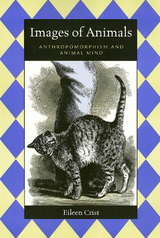
Images of Animals examines the literature of behavioral science, revealing how works with the common aim of documenting animal lives, habits, and instincts describe "realities that are worlds apart." Whether the writer affirms the Cartesian verdict of an unbridgeable chasm between animals and humans or the Darwinian panorama of evolutionary continuity, the question of animal mind is ever present and problematic in behavioral thought. Comparing the naturalist writings of Charles Darwin, Jean Henri Fabre, and George and Elizabeth Peckham to works of classical ethology by Konrad Lorenz and Nikolaas Tinbergen and of contemporary sociobiology, Crist demonstrates how words matter. She does not attempt to defend any of these constructions as a faithful representation of animal existence, but to show how each internally coherent view molds the reader's understanding of animals. Rejecting the notion that "a neutral language exists, or can be constructed, which yields incontestably objective accounts of animal behavior," Crist argues that "language is not instrumental in the depiction of animals and, in particular, it is never impartial with respect to the question of animal mind."
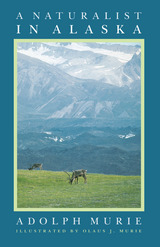
"A fascinating study of the life cycles of the animals of Alaska and their inter-relationships. One venturing to capture something of the true beauty of Alaska and its fauna will probably find it in this book."—Journal of the West
"This book should be considerable aid to those who wish to preserve some of the great natural treasures still remaining in Alaska in the face of the inevitable pressures of a growing population. The writing is absolutely first rate. Highly recommended."—Library Journal
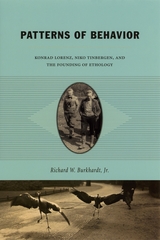
In Patterns of Behavior, Richard W. Burkhardt Jr. traces the scientific theories, practices, subjects, and settings integral to the construction of a discipline pivotal to our understanding of the diversity of life. Central to this tale are Konrad Lorenz and Niko Tinbergen, 1973 Nobel laureates whose research helped legitimize the field of ethology and bring international attention to the culture of behavioral research. Demonstrating how matters of practice, politics, and place all shaped "ethology's ecologies," Burkhardt's book offers a sensitive reading of the complex interplay of the field's celebrated pioneers and a richly textured reconstruction of ethology's transformation from a quiet backwater of natural history to the forefront of the biological sciences.
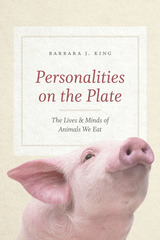
Yet that realization hasn’t yet made its presence felt to any great degree in our most intimate relationship with animals: at the dinner table. Sure, there are vegetarians and vegans all over, but at the same time, meat consumption is up, and meat remains a central part of the culinary and dining experience for the majority of people in the developed world.
With Personalities on the Plate, Barbara King asks us to think hard about our meat eating--and how we might reduce it. But this isn’t a polemic intended to convert readers to veganism. What she is interested in is why we’ve not drawn food animals into our concern and just what we do know about the minds and lives of chickens, cows, octopuses, fish, and more. Rooted in the latest science, and built on a mix of firsthand experience (including entomophagy, which, yes, is what you think it is) and close engagement with the work of scientists, farmers, vets, and chefs, Personalities on the Plate is an unforgettable journey through the world of animals we eat. Knowing what we know--and what we may yet learn--what is the proper ethical stance toward eating meat? What are the consequences for the planet? How can we life an ethically and ecologically sound life through our food choices?
We could have no better guide to these fascinatingly thorny questions than King, whose deep empathy embraces human and animal alike. Readers will be moved, provoked, and changed by this powerful book.
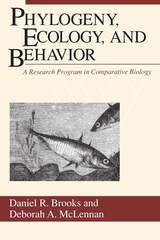
"[Phylogeny, Ecology, and Behavior] presents its arguments forcefully and cogently, with ample . . .support. Brooks and McLennan conclude as they began, with the comment that evolution is a result, not a process, and that it is the result of an interaction of a variety of processes, environmental and historical. Evolutionary explanations must consider all these components, else they are incomplete. As Darwin's explanations of descent with modification integrated genealogical and ecological information, so must workers now incorporate historical and nonhistorical, and biological and nonbiological, processes in their evolutionary perspective."—Marvalee H. Wake, Bioscience
"This book is well-written and thought-provoking, and should be read by those of us who do not routinely turn to phylogenetic analysis when investigating adaptation, evolutionary ecology and co-evolution."—Mark R. MacNair, Journal of Natural History
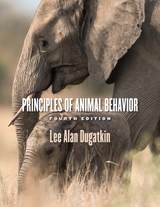
As Principles of Animal Behavior makes clear, the tapestry of animal behavior is created from weaving all of these components into a beautiful whole. With Dugatkin’s exquisitely illustrated, comprehensive, and up-to-date fourth edition, we are able to admire that beauty anew.
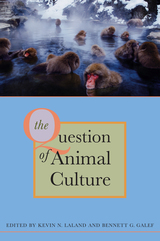
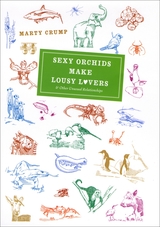
Vampire bats that regurgitate blood for roosting buddies. Mosquitoes that filch honeydew droplets from ants. Reptiles that enforce chastity on their lovers with copulatory plugs. Capuchin monkeys that use millipede secretions as mosquito repellent. The natural world is full of unusual relationships, and negotiation between life-forms striving to survive is evolution at its most diverse, entertaining, and awe-inspiring.
Picking up where her highly popular Headless Males Make Great Lovers left off, tropical field biologist Marty Crump takes us on another voyage of discovery into the world of unusual natural histories, this time focusing on extraordinary interactions involving animals, plants, fungi, and bacteria. Sexy Orchids Make Lousy Lovers& Other Unusual Relationships illuminates the ceaseless give-and-take between species. Occasionally, both interacting parties benefit, like when hornbills and dwarf mongooses hunt together for food. Other times, like when mites ride in hummingbirds’ nostrils to reach their next meal of nectar, one individual benefits and the other is neither helped nor harmed. But sometimes one individual benefits at the expense of the other; you need only recall your last sinus infection to understand how that works.
Throughout, Crump brings her trademark spunk and zest to these stories of intimate exchange. She introduces readers to penguins that babysit, pseudoscorpions that ride and mate under the wings of giant harlequin beetles, and parasitic fungi that bend insects to their will. A lively companion to Crump’s earlier work, Sexy Orchids Make Lousy Lovers& Other Unusual Relationships captures the bizarre and befuddling aspects of the behavior of animals, plants, and microbes. After this entertaining romp through the world of natural relationships, you’ll never look at an orchid the same way again.

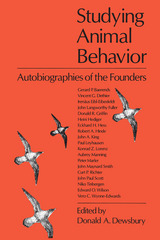
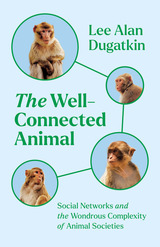
It’s all about who you know. Whether vampire bats sharing blood meals for survival, field crickets remembering champion fighters, macaque monkeys forming grooming pacts after a deadly hurricane, or great tit birds learning the best way to steal milk—it pays to be well connected.
In this tour of the animal kingdom, evolutionary biologist Lee Alan Dugatkin reveals a new field of study, uncovering social networks that existed long before the dawn of human social media. He accessibly describes the latest findings from animal behavior, evolution, computer science, psychology, anthropology, genetics, and neurobiology, and incorporates interviews and insights from researchers he finds swimming with manta rays, avoiding pigeon poop, and stopping monkeys from stealing iPads. With Dugatkin as our guide, we investigate social networks in giraffes, elephants, kangaroos, Tasmanian devils, whales, bats, and more. From animal networks in Australia and Asia to Africa, Europe, and the Americas, The Well-Connected Animal is an eye-opening exposé of wild friends, enemies, and everything in between.
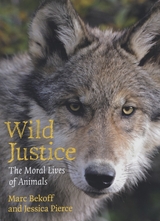
Scientists have long counseled against interpreting animal behavior in terms of human emotions, warning that such anthropomorphizing limits our ability to understand animals as they really are. Yet what are we to make of a female gorilla in a German zoo who spent days mourning the death of her baby? Or a wild female elephant who cared for a younger one after she was injured by a rambunctious teenage male? Or a rat who refused to push a lever for food when he saw that doing so caused another rat to be shocked? Aren’t these clear signs that animals have recognizable emotions and moral intelligence? With Wild Justice Marc Bekoff and Jessica Pierce unequivocally answer yes.
Marrying years of behavioral and cognitive research with compelling and moving anecdotes, Bekoff and Pierce reveal that animals exhibit a broad repertoire of moral behaviors, including fairness, empathy, trust, and reciprocity. Underlying these behaviors is a complex and nuanced range of emotions, backed by a high degree of intelligence and surprising behavioral flexibility. Animals, in short, are incredibly adept social beings, relying on rules of conduct to navigate intricate social networks that are essential to their survival. Ultimately, Bekoff and Pierce draw the astonishing conclusion that there is no moral gap between humans and other species: morality is an evolved trait that we unquestionably share with other social mammals.
Sure to be controversial, Wild Justice offers not just cutting-edge science, but a provocative call to rethink our relationship with—and our responsibilities toward—our fellow animals.
READERS
Browse our collection.
PUBLISHERS
See BiblioVault's publisher services.
STUDENT SERVICES
Files for college accessibility offices.
UChicago Accessibility Resources
home | accessibility | search | about | contact us
BiblioVault ® 2001 - 2024
The University of Chicago Press









